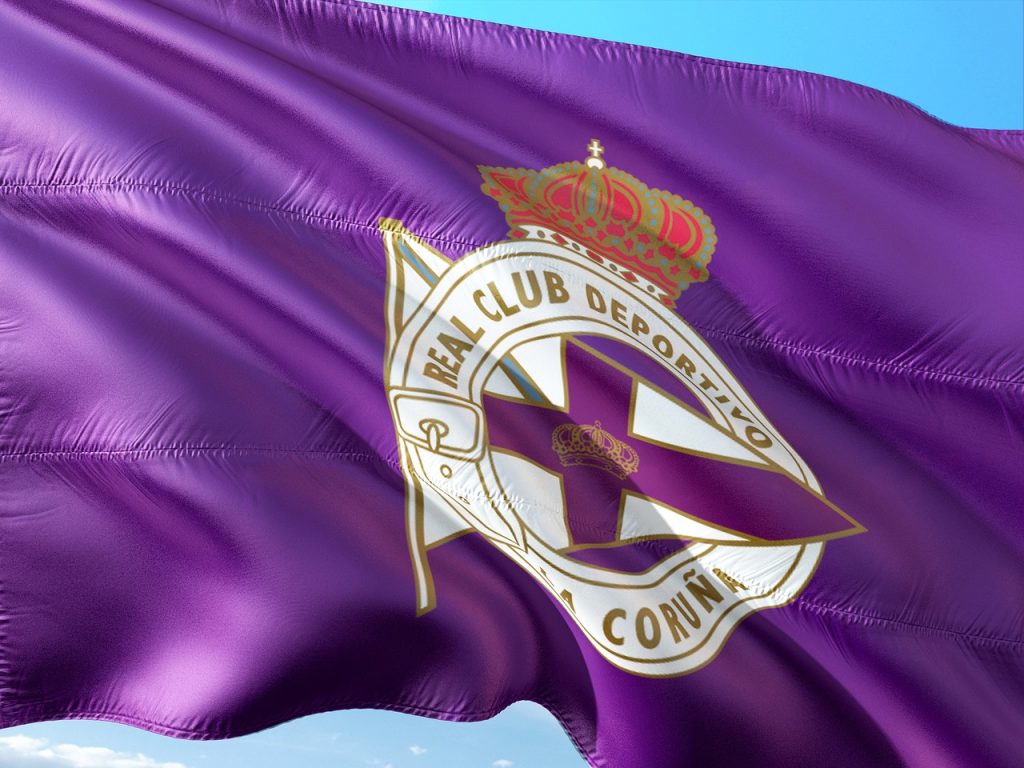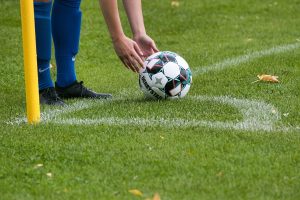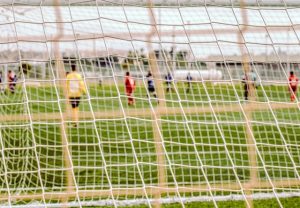
Hello friends and fans of Deportivo de La Coruña, Deportivo, or simply Dépor, as the club is oftentimes called. Today we have prepared for you a slightly longer blog post than the ones you have already gotten used to. The reason is that we would like to give you a full overview of the early days of Deportivo de La Coruña, one of the most attractive and beloved Spanish football clubs.
If you manage to read through to the end of this article, you will find out that Dépor has a long history full of unexpected twists and turns. Throughout the years, the team has had many successes but it has also faced numerous challenges. Periods of glory have alternated with dark ages, so keep reading to learn more!
Deportivo de La Coruña Establishment and First Steps
Deportivo de La Coruña has had a wildly interesting history from the very beginning. For a start, the city of A Coruña, which is the home of Dépor, was quite late to the football party. While the rest of Spain had been already obsessed with the game, A Coruña did not see its own football team until 1906.
Before that, football was mostly popular across the city thanks to the efforts of a young man called José María Abalo. The gentleman returned home after studying in England and brought his passion for the game with him to A Coruña.
Soon after, the city already had a serious base of players and fans. Football quickly became a thing in A Coruña, and in December 1906, the team of Deportivo de La Coruña was born. Its founders were a group of Sala Calvet gymnasium members, who were eager to play with other squads across the country and why not abroad.
Things turned out well for the team and in May 1907, King Alfonso XIII of Spain granted Deportivo de La Coruña the royal denomination. In Spanish, the word for that is “Real.” Thus, Dépor became a recognized team, whose first president was called Luis Cornide.
Of course, a proper football squad needed its own stadium. Thus, Deportivo de La Coruña started playing at Corral de la Gaiteira, which translated into English means “Piper’s Yard.” Later on, it moved to a ground near Riazor beach, known as Old Riazor.
The club’s players and leadership were very dedicated to the game but without any significant successes at first. Initially, Deportivo de La Coruña were great at friendly matches and in local leagues. However, it seemed like they could not make a breakthrough in the Copa del Rey.
Nonetheless, the team’s headstrong approach did give positive results in a few years. In 1912, Dépor finally gained their first title. The team topped the so-called Concurso España.
More successes followed after 1920, when the Spanish national football team entered the Summer Olympics for the first time. The event took place in Antwerp and marked a special occasion for Spanish football. Following the Olympics, the game became tremendously popular on the Iberian Peninsula. This resulted in many clubs gaining professional status and a newly established league competition. The latter began functioning for the 1928-29 season.
Gaining Impetus

In the years to come, Deportivo de La Coruña would have a turbulent yet captivating fate. The club did not enter the 1928-29 season with flying colors. Instead, Dépor did not manage to qualify for the nascent Primera División. It competed in Segunda División, only to end eighth out of ten teams.
Nonetheless, the squad did not give up. Instead, it persisted in making its way through a division that was shaken by frequent changes and presented uncertain circumstances. Finally, in 1932, while playing for the Cup, Deportivo de La Coruña beat Real Madrid – a team that had not faced a single defeat throughout its entire season in the league.
Nonetheless, the road to the top flight remained full of obstacles. The Spanish Civil War broke out in 1936. This terminated all domestic competitions until the season of 1939-40. Unfortunately, Deportivo failed to enter Primera División yet again.
Nonetheless, the next season was more successful for Deportivo de La Coruña. The squad finally got a promotion to La Liga for the first time in its history. The success came after Dépor defeated Murcia with 2-1 in the promotion play-offs.
The team had a good season in the top flight and finished fourth. As luck would have it, however, Dépor did not perform up to expectation during the next few seasons and finally got relegated back to Segunda División at the end of the 1946-47 season.
As life is full of ups and downs, however, Deportivo de La Coruña did not give up. The players and the club’s management gave their best in the months that followed. With a little bit of luck, they returned to La Liga in the 1946-47 season.
Riazor
Being in the top flight, Dépor needed a new stadium. That is how they built Riazor, which is the team’s home to this day. The stadium opened officially on October 28, 1944. On that day, Deportivo played a league game against Valencia.
Here is a video depicting how Riazor looks like today:
Juan Acuña

During this period of glory, Deportivo de La Coruña’s key player was Juan Acuña. He was Dépor’s goalkeeper and went by the nickname of “Xanetas.” Xanetas won four Zamora Trophies between the years of 1942 and 1951, thus becoming the second most-awarded goalkeeper in La Liga.
The “Golden Decade”
Between 1948 and 1957, Deportivo de La Coruña lived through what many call the “Golden Decade. While the club finished only tenth in the 1948-49 season, the following season marked a tremendous success. The team gave its best, and Deportivo ended as the runners-up, only one point behind Atletico Madrid.
The person who contributed the most to this success was its Argentinian manager Alejandro Scopelli. The manager brought to the team a stellar bunch of South American players who made it way more competitive than before. Among these were:
- Julio Corcuera
- Oswaldo García
- Rafael Franco
- Dagoberto Moll
Hence, Dépor was able to remain in the top flight for nine consecutive seasons. It was during that period that Luis Suárez, the only Spanish player to receive the Golden Ball, played for the club.
The Yo-Yo Era and the “Dark Times”

In 1957, after successfully completing nine seasons in the top flight, Deportivo de La Coruña were relegated to the Segunda División. They stayed there for five seasons, until 1962, when they got promoted again.
From then on, a weird phenomenon occurred with Dépor. The club underwent a yo-yo effect with gaining promotions in the years of 1962, 1964, 1966, 1968, and 1971 followed by alternating relegations each subsequent year until 1973. People even adopted the term “elevator team” when referring to Deportivo de La Coruña.
It is interesting to note that Dépor had an amazing youth system at that time. The club gave rise to many young players who became celebrated football stars in larger Spanish clubs and Europe. Nonetheless, the money issues that constantly bothered Dépor did not allow the club to retain those players. The managers were forced to sell, and this impeded the team’s success in the top flight. That is how in 1973, Deportivo de La Coruña were again relegated to the Segunda División.
From then on, the so-called “Dark Times” followed. Not only was Deprotivo relegated to the Segunda División but the team even struggled to remain in it. At one point, they got relegated to the Tercera División or the third tier.
Somehow, the squad managed to brace themselves and got a promotion to the Segunda División shortly. They remained there until 1980 when they got relegated again. This time, they downsized to Segunda División B but only for a short period. Until the end of the 1987-88 season, Dépor remained in Segunda División.
“Súper Dépor”

To end this blog post on a positive note, let us highlight the “Súper Dépor.” During the 1988-89 season, former Deportivo player and manager Arsenio Iglesias was re-appointed as manager. This put the beginning to a decade of triumphs.
The first one was the club’s promotion back to La Liga in 1990-91 after 18 years of failed attempts. As this success came, Deportivo’s finances improved, and the club gained more support. Iglesias delivered a balanced mixture of experienced veteran players from some of Spain’s top clubs and promising youngsters.
In the 1992-93 season, Deportivo de La Coruña finished third in La Liga after the winners Barcelona and runners-up Real Madrid. This is how the club qualified for their first-ever European competition.
The 1993-94 season also was a good one. While the club faced some challenges at home, it saw a successful European debut. Playing for the UEFA Cup, Dépor defeated Aalborg BK and Aston Villa and lost to Eintracht Frankfurt in Round 16.
During the 1994-95 season, Arsenio Iglesias stated he intended to leave the squad after the year’s end. In the meantime, Deportivo achieved great domestic success finishing as the La Liga runners-up to Real Madrid.
The club’s season at the UEFA Cup was mediocre, and Dépor lost to Borussia Dortmund 3–2 on aggregate. Nonetheless, things at home were going great. The club had a terrific run in Copa del Rey, thus reaching the final for the first time. Deportivo de La Coruña played against Valencia on June 24, 1995, at the Santiago Bernabéu. However, in the 80th minute, the game got suspended because of heavy rain and hailstorm. Three days later, the match resumed, and Dépor won its first major title after the 1912 Concurso España.
The 1995-96 season was a mediocre one for Deportivo de La Coruña. However, the club did manage to reach the Cup Winners’ Cup semi-finals.
Conclusion
We hope you have enjoyed our overview of Deportivo de La Coruña’s early history. To find out more about the club today as well as learn many interesting facts, please stay tuned for more of our blog posts!
